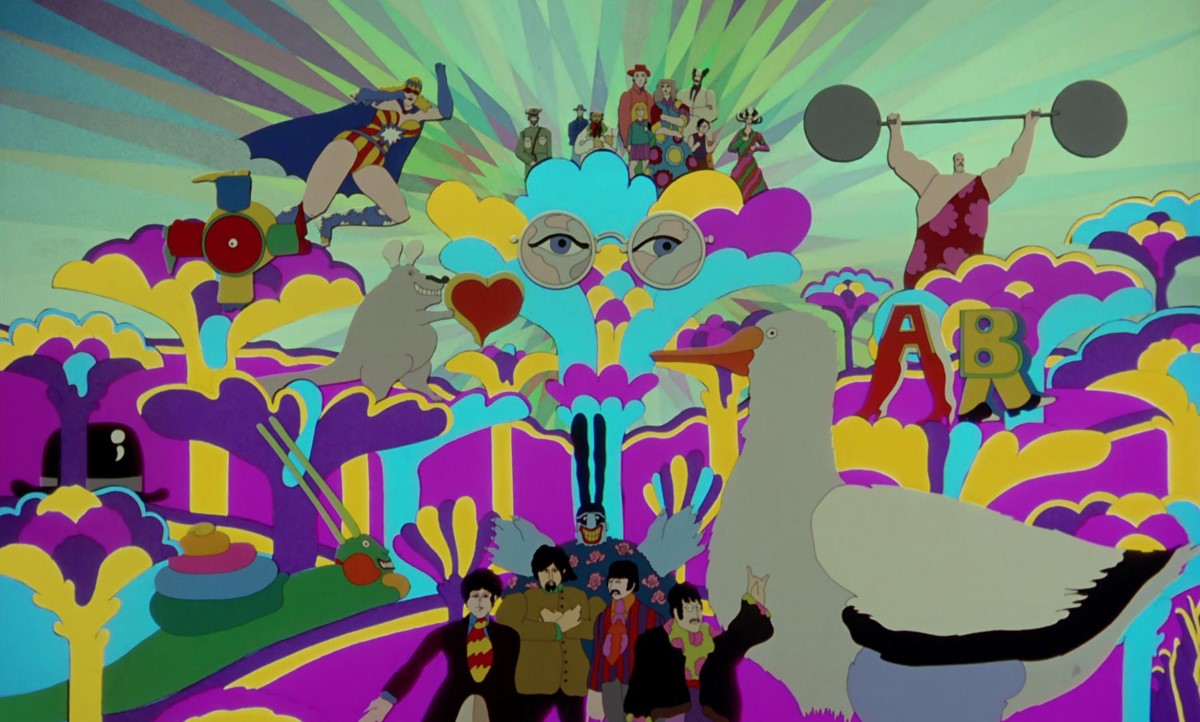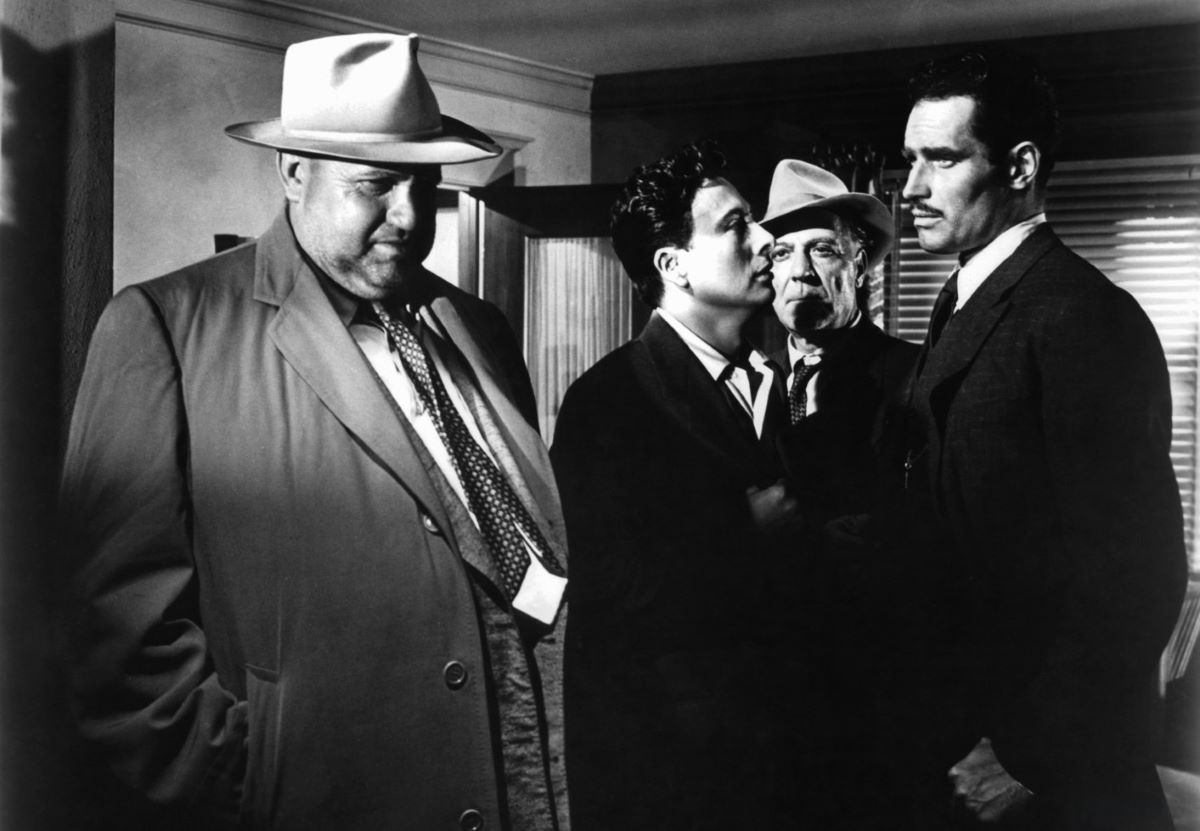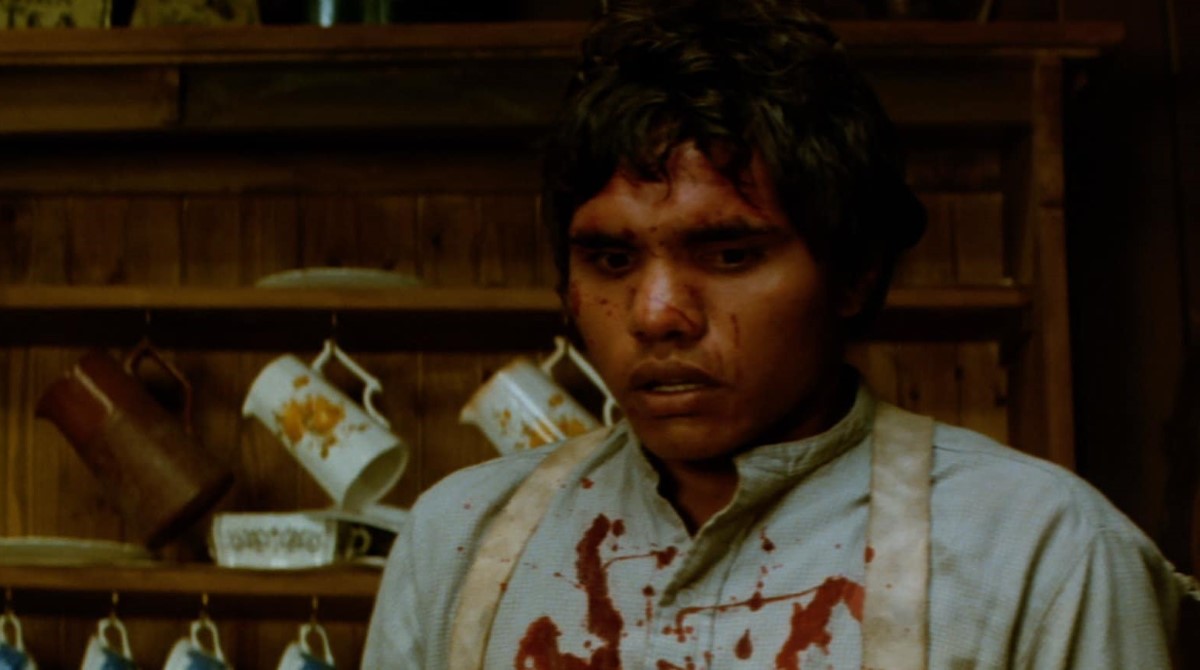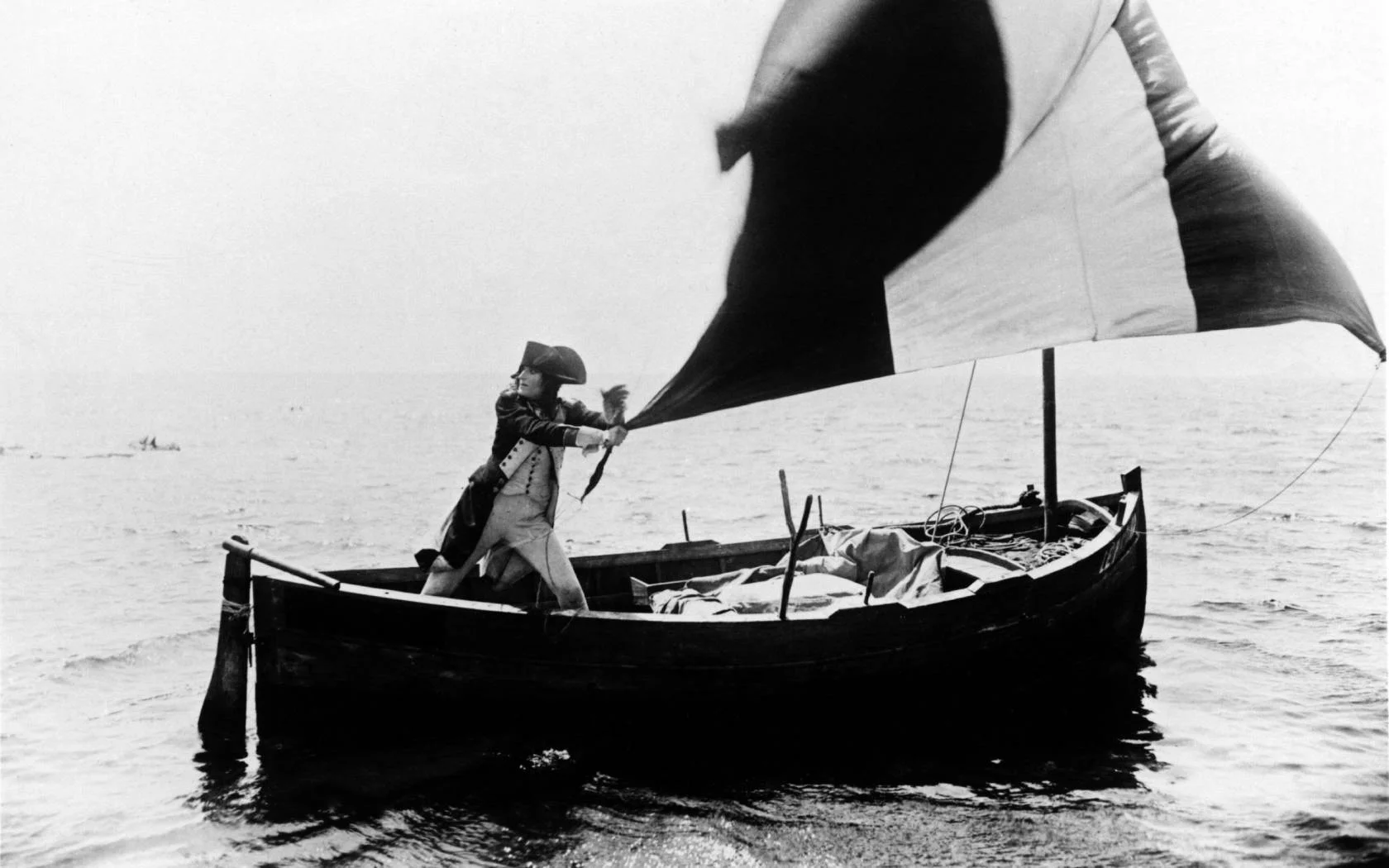Metamorphosis of the Beatles
by Pauline Kael
From the nursery to the boutique is now a very short path; “Yellow Submarine” travels it with charm and ease. The Beatles, represented by cartoons, go to the rescue of the people of Pepperland and save them from the Blue Meanies, their weapons being (who’d have guessed it?) music and love — but what is so pleasant about “Yellow Submarine” is its lighthearted, throwaway quality, and the story seems as disposable as the banter and the images. If the movie tried to be significant, if it had “something to say,” it might be a disaster. One of the best characters is a gluttonous consumer with a vacuum snout, who devours the universe, yet the movie itself sucks up an incredible quantity of twentieth-century graphics. If “Yellow Submarine” were not so good-natured and — despite all the “artistic” effects — unpretentious, one would be embarrassed; its chic style can’t support much more than the message of “love.” You could almost make a game of how many sources you can spot, but, because of the giddy flower-childishness of it all, this not only seems all right but rather adds to one’s pleasure. The eclecticism is so open that it is in itself entertaining — we have the fun of a series of recognitions. A little Nolde here, a bit of Klimt there, the hotel corridor from “The Blood of a Poet,” with “The Mysteries of China” now become Indian, and good old Birnam Wood moving once again — it’s like spotting the faces in Tchelitchew’s “Cache-Cache.”
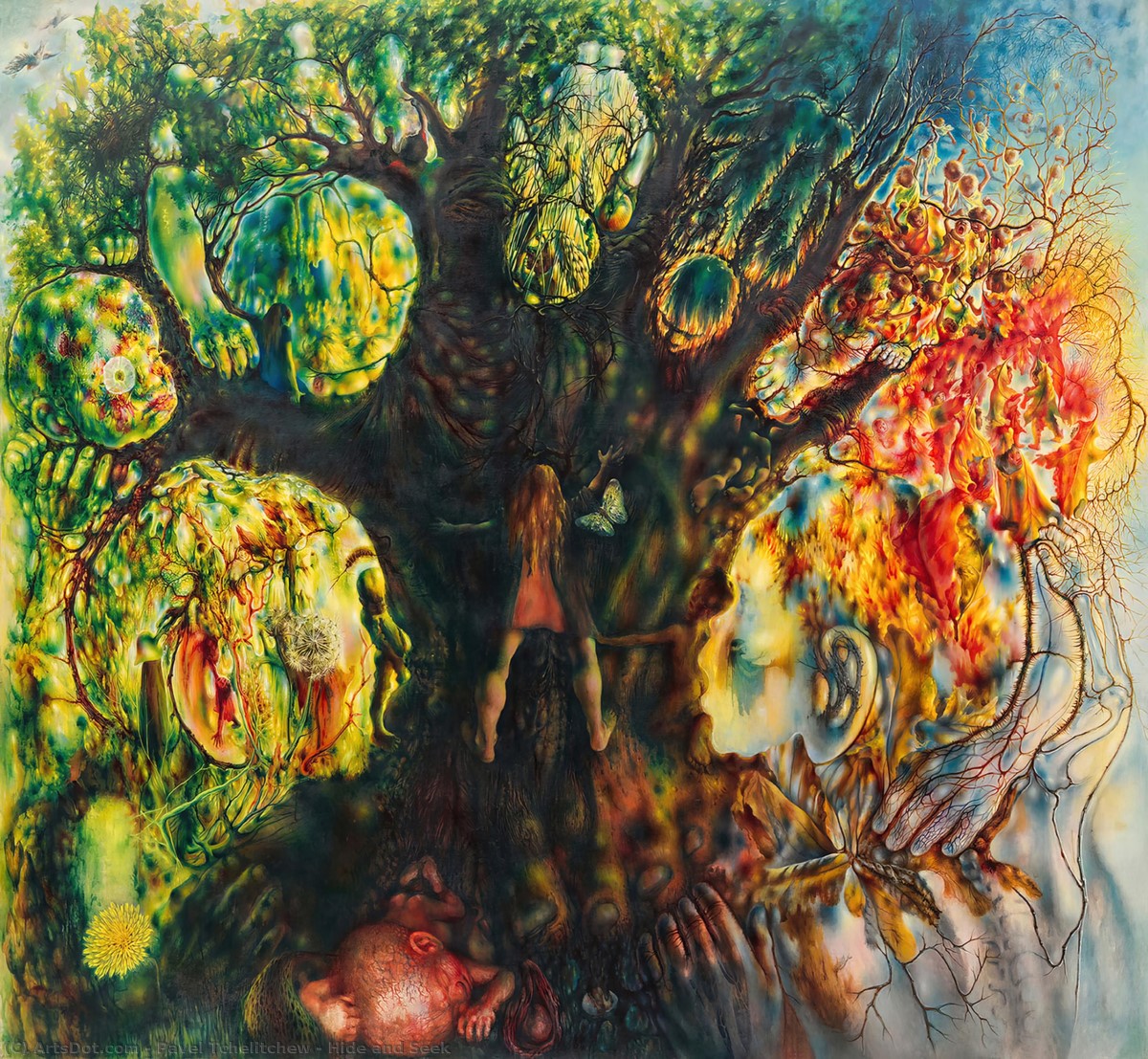
Hide-and-Seek
Derby, Vermont and New York, June 1940 – June 1942
The movie is extravagantly full of visual puns and transformations, but not too full (though there are places where one might wish for an extra instant to savor what is going by). The Beatles’ non-singing voices are not their own, but they’re good. The verbal jokes invite comparison with Edward Lear but can’t sustain it. The movie seems to get its spirit back each time one of the Beatles’ songs (sung by the Beatles) comes on (there are ten, three of them new), and this is not just because of the richer verbal texture but because the animation, ingenious as it is, is not much more than a shifting series of illustrations. The movie works best when the images (even though they don’t quite connect with the meaning of the lyrics) are choreographed to the music.
In animation, anything can turn into anything else, and children love it for the illogic that is a visual equivalent of their nursery rhymes and jingles and word games. Recent American commercial cartoons have been so undistinguished visually and limited so much of the time to the reversibility of destruction that “Yellow Submarine,” with its bright Pop flourish and inventiveness, restores the pleasure of constant surprise, which has always been the fun of good animation. Yet what will probably make “Yellow Submarine” a great success is its superlogical development: the Beatles walk by, and flowers grow out of them. They’re no longer the rebellious, anarchistic Pop idols that parents were at first so outraged by; they’re no longer threatening. They’re hippies as folk heroes, enshrined in our mythology. The name “Beatles” no longer suits them; they have become quaint — such gentle, harmless Edwardian boys, with one foot in the nursery and the other in the boutique, nothing to frighten parents. The movie is a nostalgic fantasy — already nostalgic for the happy anarchism of “love.” It finally goes a bit flat because love is no longer in bloom.
No doubt we can all do with less threat and less stress in the environment, and yet there’s something depressing about seeing yesterday’s outlaw idols of the teen-agers become a quartet of Pollyannas for the wholesome family trade. And if one looks at a list of the merchandise being promoted in conjunction with the movie, one may long for the simpler days of Mickey Mouse watches. That omnivorous consumer better get ready to suck up seven different “Yellow Submarine” books and a die-cast submarine and clocks and masquerade costumes and sweatshirts and stuffed dolls and inflatable swim toys and posters and lunch-boxes and pillows and aprons and lamps and about fifty other products. Wasn’t all this supposed to be what the Beatles were against? The way attacks on the consumer society become products to be consumed is, to put it delicately, discouraging. The Beatles had already become part of a comic-strip world in “Help!” By now, they have replaced Mickey Mouse as symbols of the union of art and popular success. Their loss of corporeality seems perfectly natural and right.
Movies are treacherous. I don’t fully respect what the director, George Dunning, has done in “Yellow Submarine”; I don’t truly admire much of what the chief designer, Heinz Edelmann, has done. And yet the movie is charming. They have done what hasn’t been done before in animation — at least, not on anything like this scale. And if it’s derivative, so was the Disney style — though not so obviously, since it was more unified. Despite all the enthusiasm registered in the press for animated features, this is one of the handful of palatable ones.
Without human characters, an animated feature is likely to be a bore, but animated human figures have never quite worked. Erwin Panofsky provided a reasonable explanation: “The very virtue of the animated cartoon is to animate; that is to say, endow lifeless things with life, or living things with a different kind of life. It effects a metamorphosis, and such a metamorphosis is wonderfully present in Disney’s animals, plants, thunderclouds, and railroad trains. Whereas his dwarfs, glamourized princesses, hillbillies, baseball players, rouged centaurs, and amigos from South America are not transformations but caricatures at best, and fakes or vulgarities at worst.” Still, this may be a little too pat. In the arts, one can never be altogether sure that the next artist who comes along won’t disprove one’s formulations. “Yellow Submarine” does not exactly disprove Panofsky, but one sequence, the dancing couple for “Lucy in the Sky with Diamonds,” is a stunning use of stylized human figures — an apotheosis of Rogers and Astaire. Rather surprisingly, Edelmann follows the Disney and U.P.A. artists very closely in most of the human characters, making the Beatles as limply boneless and sweet as Snow White, and the Meanies grisly caricatures constantly displaying their cruel teeth. Even so, they shake Panofsky’s formulations a bit, because in “Yellow Submarine” this weakness is not as crucial as in the Disney films. Where there is so much to choose from and the style is a collection of rejectable items, something bad may not matter very much. Aesthetic theories don’t always allow for the variety of what we enjoy; we may like a certain amount of caricature and grisliness, and I preferred Popeye and Mr. Magoo to most animal characters in cartoons, because they were wittier. The Beatles provide a frame of reference that holds this movie together, though as cartoons they are weak facsimiles, with less character than the movie’s fish, who are like windup toys, and its strange made-up monsters, or even its professorial little Boob. The single worst sequence in the movie — even worse than the addendum of filmed live Beatles — is the montage of photographed cities as the cartoon Beatles leave Liverpool; it disrupts the fantasy. But raiding the arts — shooting the works in animation — succeeds. It becomes an equivalent of the way kids dress now — cutting through the anxieties about what is appropriate and the class structure of good taste, wearing what they feel like wearing, and making life a fancy-dress ball. The movie has something of this freshness; throwing in a multiplicity of styles — even a couple of startling Op sequences — is a fluke solution to a problem that more rigorous-minded men have failed to solve.
Animation is beautifully suited to the short form — to imaginative excursions of from four to eight minutes. Many people simply turn off after a few minutes of animation. But animators can’t make a living out of shorts for theatres, because theatres pay almost nothing for shorts. Audiences come for the features, and theatre-bookers argue that they come in the same numbers when the short is an ad for travel that the theatre gets free. Few theatre men care enough about these captive audiences to give them a fair shake; many theatres provide shorts that their customers would not watch at home on television. It was because Disney couldn’t make enough money on his shorts — even the Academy Award-winning ones that made his studio famous — that he turned to animated features. He made only a few, and there have been only a few from other sources. The reasons for their rarity are not only commercial; there are some peculiar artistic problems involved. This was obvious in Disney’s first feature, “Snow White and the Seven Dwarfs,” which rescued him financially. In order to attract audiences and to hold their interest for a full-length feature, he sacrificed the simplicity and stylization that had been so marvellous in early shorts; he employed a more naturalistic style of drawing and some semi-human characters. It’s probable that if he had not done so, if he had tried to tell a full-length story with the non-realistic stick figures of early animation, he would have been wiped out. The delight that audiences took in the Disney animated features was that they were so much like “life”; the Disney artists were using animal and human models (his nature documentaries grew out of the photographic material gathered to help them), and the more naturalistic the animation became, the more complex and expensive it became. It is much cheaper and easier to photograph people in motion than to make drawings of people move smoothly and realistically; Disney took the logical step and began to make “live-action” movies. He had already tried to insert live actors in an animated feature, and, in the highly publicized “Fantasia” — which was really a package of shorts — he tried to get away from naturalism by combining several styles and tried to attract an audience by advertising Stokowski and the classical music and the abstract sequence. The attempts failed at the box office, and maybe they would have failed as badly, or even worse, if they had been more imaginative. Karel Zeman’s “The Deadly Invention,” which is probably the finest contemporary animated feature — and one that successfully integrates live actors — was not well received when it was released here, as “The Fabulous World of Jules Verne.” Even with the live actors, the stylization seemed too much for audiences, and in neighborhood theatres they talked through it as they waited for the second half of the double bill — a routine live-action film that held their interest.
The Disney artists’ animation was pre-Pop pop of a simple, consistent, and often stupid kind, and this was true, oddly, of ‘‘Animal Farm,” the last animated feature to come from England. But Pop has now become a style; “Yellow Submarine” uses Pop heroes and Pop Art deliberately, and with sophistication. And it works. But it is merely a further development of what ads and commercials have already been doing. People who want to make animated features may now have an easier time getting backing, but the aesthetic problems haven’t been solved. Animators can’t just keep on ravaging the art of the twentieth century; after the orgy of “Yellow Submarine” it’s going to look worn out.
The New Yorker, November 30, 1968

